The correct brewing method of hanging-ear Coffee bag to illustrate the Top Ten list of Top Ten Brands of Black Coffee filter bag
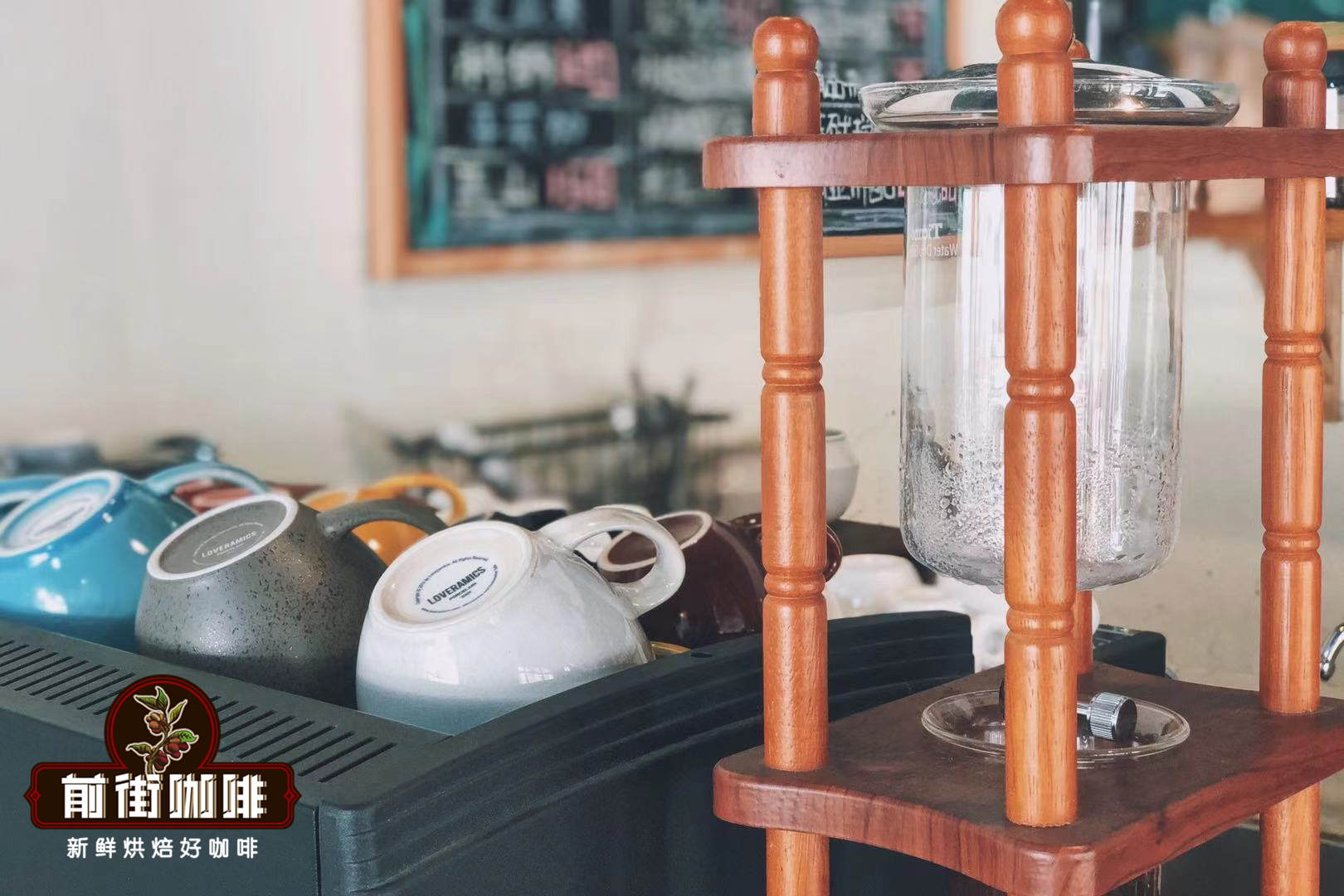
For the same bean, there will be a certain difference in flavor between freshly roasted coffee and hanging ears, because after the coffee is ground into powder, the natural aroma will disappear very quickly, of course, there are many old customers in Qianjie who ask to grind the powder for delivery. In general, Qianjie is advised to drink it as soon as possible. Of course, hanging ears against each other, it is very convenient, there is not much time for cooking words, hanging ears coffee bag is also a good choice.
Qianjie hanging ear Coffee series has a number of regional flavors, such as Yega Chuefei, Brazil, Kenya, Flower Butterfly, Mantenin, Honduras Shirley and so on. Of course, there are other types of coffee beans. If guests want to make hanging ear-type filter coffee bags, Qianjie will also make them according to demand. For example, a few days ago, a guest drank a golden manning in the store and felt satisfied with the taste, but he didn't bother to go home to grind the powder. we made it on the spot to hang ears for the guests.
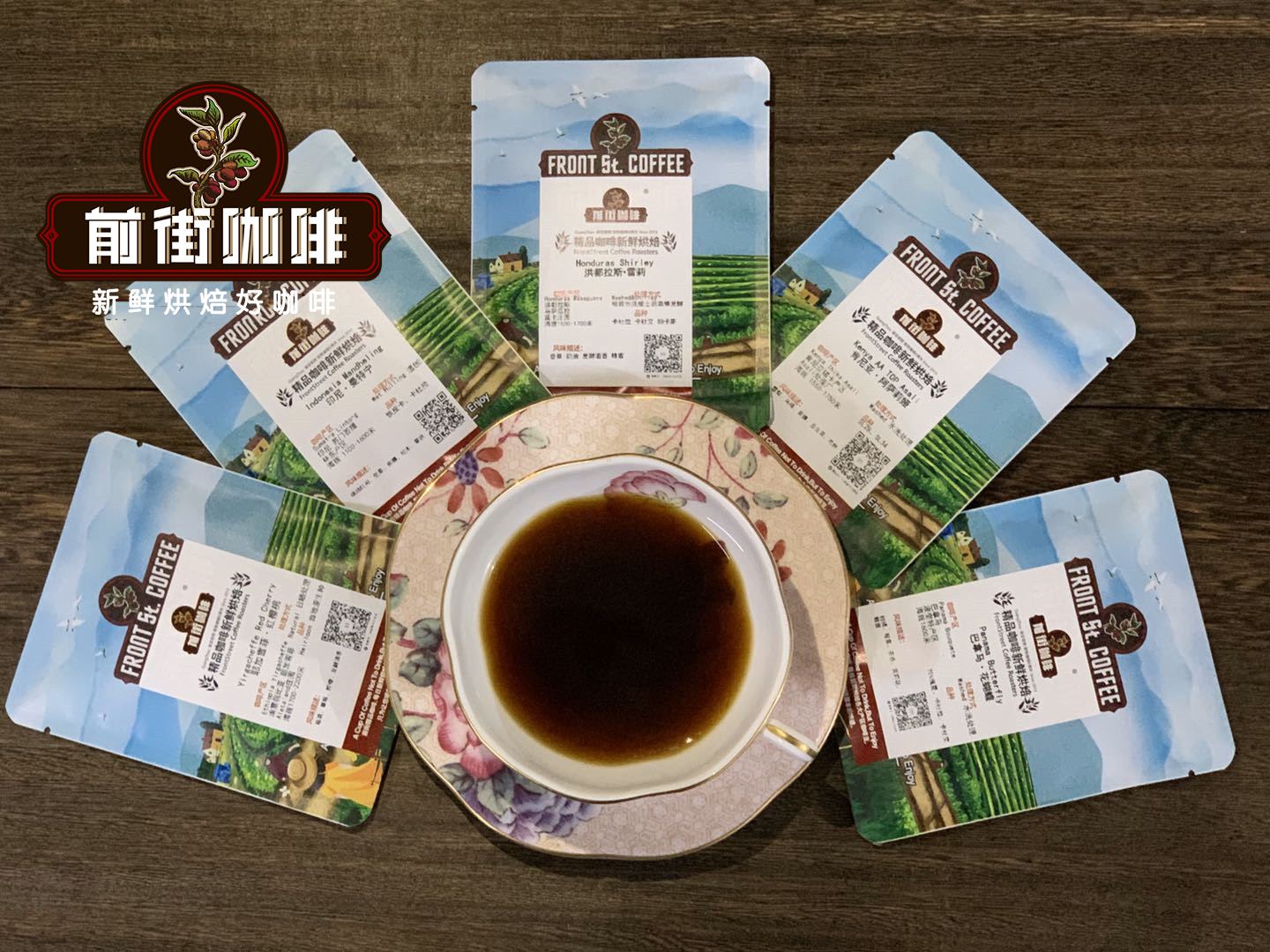
How should I use the hanging-ear coffee? Qianjie is going to introduce the hanging-ear coffee to you! First, let's familiarize ourselves with the brewing method of hanging-ear coffee, which is a little more troublesome than instant coffee. [the right way to make hanging-ear coffee]
1, hint sign, it is also easy to tear, the cup mouth should not be too big, otherwise it may not stand yo.
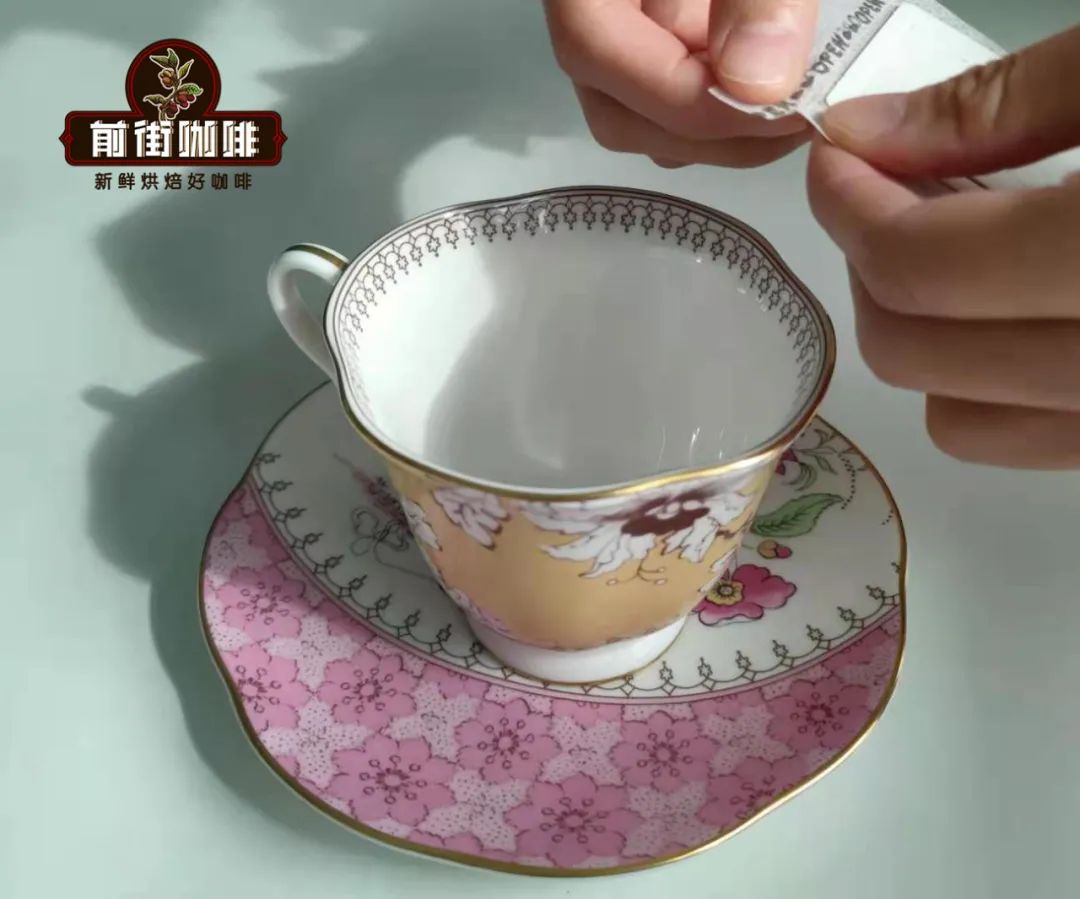
2. Pour in 90 ℃ of hot water and stew for 20 to 45 seconds without coffee powder.
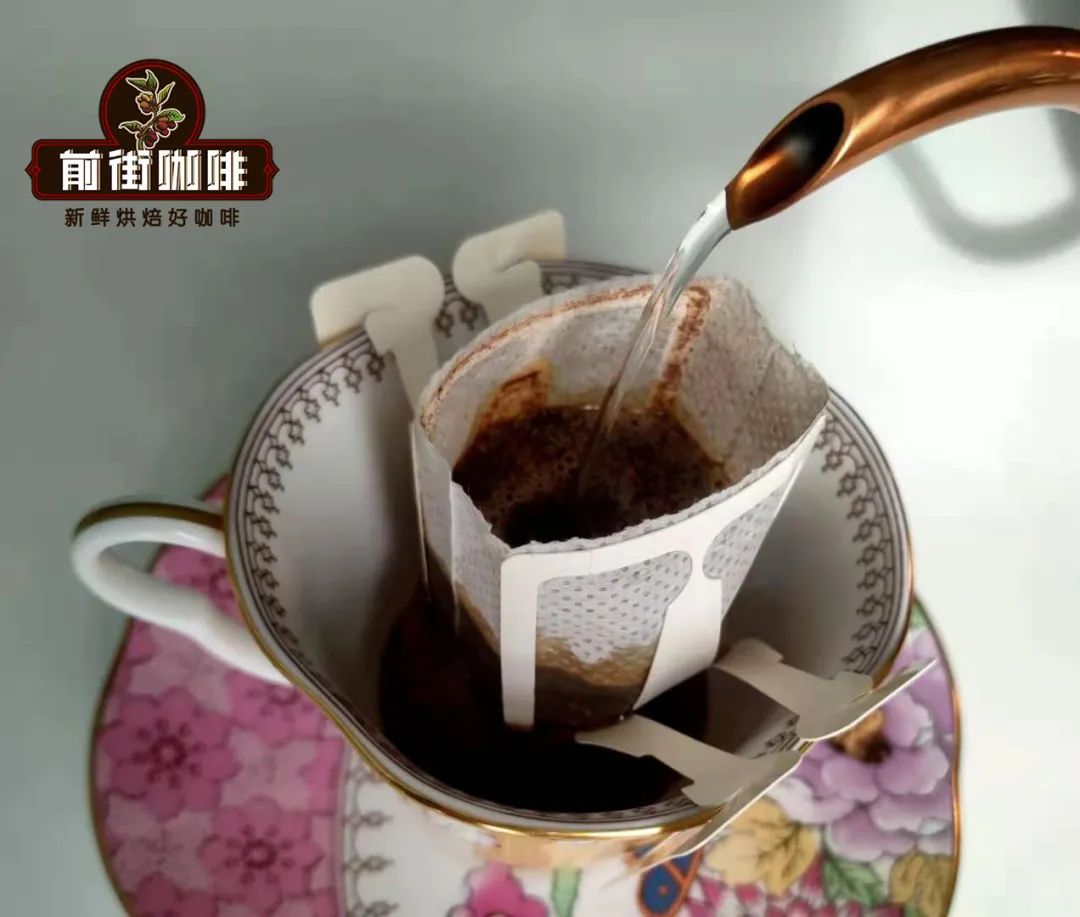
3. After a short stew, the coffee powder has released a very strong aroma. The amount of ear powder hanging in front of the street is 10g, the ratio of powder to water is 10g, and the ratio of powder to water is 15g. Pour hot water into 150ml or so. If you like strong, you can add less water. If you like light, you can add more water, and the proportion can be adjusted according to your taste. In the way of brewing hanging-ear coffee, many guests in the front street will ask if they want to divide it into sections. In fact, a small flow of water can be injected directly into the 150ml. Hanging-ear coffee is simple and convenient without too many requirements.
4. Take out the earbag and throw it into the trash can. Add sugar and milk according to your preference, if you like to add milk, the proportion of hanging-ear coffee can be increased (to put it simply, it is a little stronger). Then the 1:8 ratio of coffee to milk, you can also use a foam maker to beat the milk into foam, which will become a simple latte.
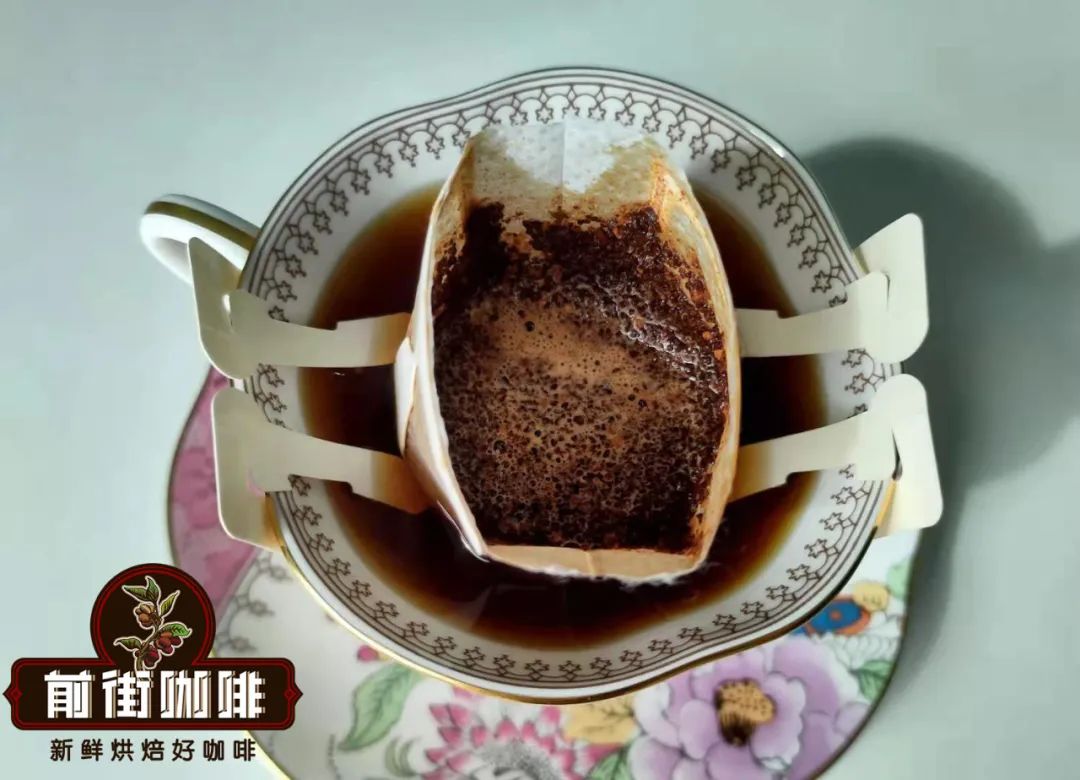
[wrong method of brewing ear]
1. Dissolve the coffee powder as quickly as possible. Before Qianjie Coffee, I received feedback from guests that there were a lot of dregs in the coffee. After asking, I found out that it was a mistake to drink the coffee powder directly. Although the guests reported that it was delicious, there were still so many coffee grounds, which still affected the taste. Qianjie Coffee is here to remind you: thousand! Wan! No, no! Yes! Pour the coffee powder out of your earbag! This is wrong!
Instant coffee, a dry coffee extract obtained by evaporating the water in the coffee extract, can quickly dissolve in hot water, which is essentially different from real coffee. The coffee powder used in hanging-ear coffee is ground from freshly roasted coffee beans and contains a large number of insoluble substances such as plant fiber, so trickling extraction is usually adopted to avoid the residual coffee grounds affecting the taste.
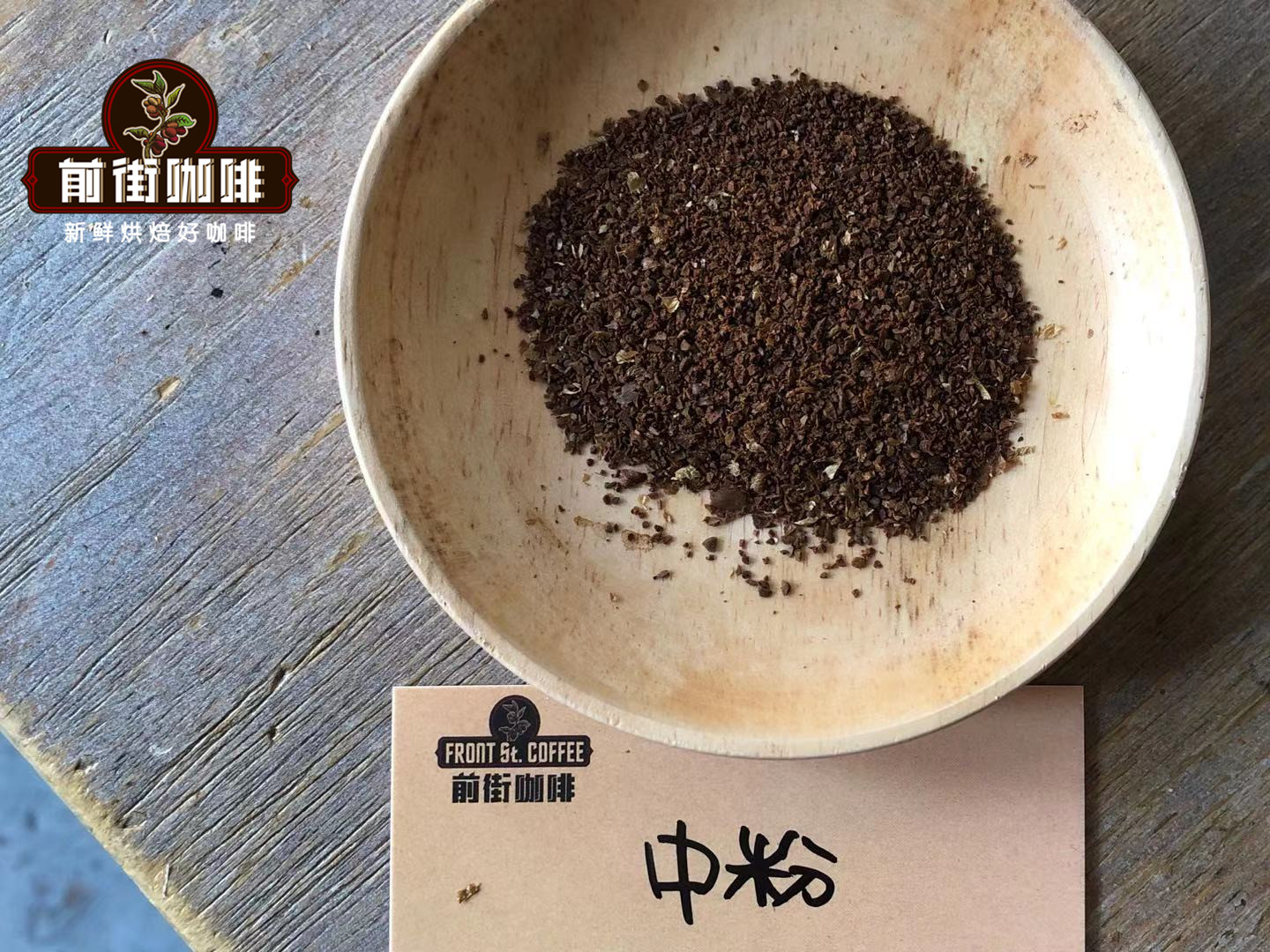
2. Use ear bags as tea bags. Front Street Coffee also encountered feedback that the coffee did not taste, it turned out that the other party directly threw the ear bag into the cup.
Although ear bags and tea bags are made of non-woven bags, they look a bit like each other. But the ear bag has such a big paper ear that you can't ignore it unless you want to drink weak water with paper foam... Remember! Ears are hung up and brewed!
3, do not tear the opening to brew, this is the front street coffee encounter the highest error rate brewing method. Most brands of ear bags are lightly marked with "OPEN" on the seal, and Front Street Coffee's ear bags are also marked with "OPEN". Some friends thought that hanging ears were hanging tea bags, so they didn't expect to tear open the mouth. However, without tearing open the opening, there will be less water brewing process, it is inevitable that there will be insufficient coffee flavor extraction phenomenon, front street coffee suggestion, hanging ear bag in the brewing before the first step is to tear the mouth!
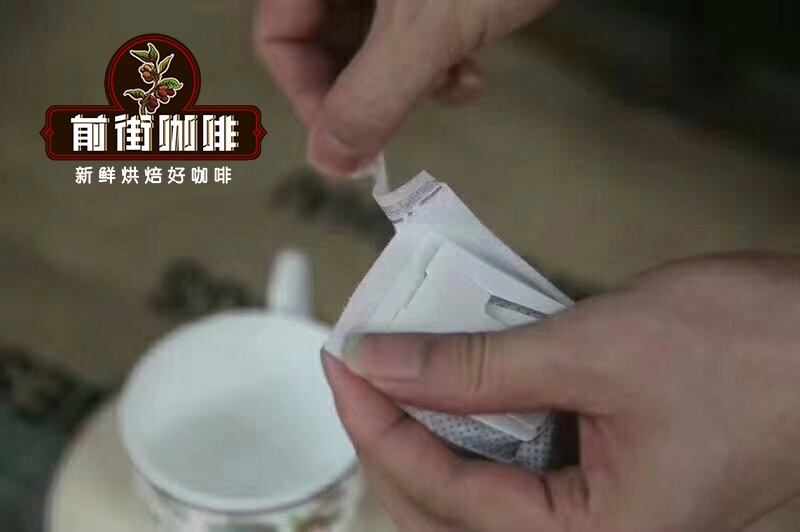
4. Other strange mistakes
There are two kinds of coffee in front street here. The first is that when the first three steps are done correctly, the "take" step is missing. Please remove the ear bag within 2 minutes after brewing, otherwise it is easy to affect the taste besides getting in the way. The second is to tear, hang, rush, take four steps to do the right thing, but after drinking this cup, pick it up and make the second one. Qianjie Coffee warm Tip: please discard the earbag after brewing, do not reuse! The flavor of the coffee is gone, and no useful substance can be extracted.
Finally, put a brewing step diagram of Qianjie coffee for reference! Tear, hang, rush, pick up, all of them are indispensable. Remember these four steps, and now enjoy your own hanging-ear coffee.

Front Street Coffee Tip: three details make the coffee taste better!
1. Use a small pot instead of a drinking machine for water injection.
Many people make hanging-ear coffee and take it directly to the drinking machine. As soon as the hot water is turned on, it will be washed down.
But if you want to make the coffee taste better, the water should be soft and stable so that it doesn't smell too much.
As long as a simple small pot, you can flush out a stable flow, reduce the extraction of uncomfortable odor, and make the flavor more ideal.
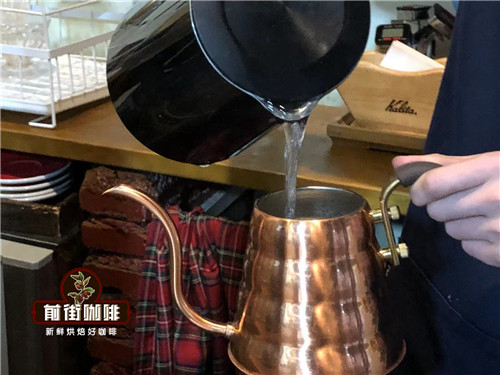
2. The proportion of cooking and cooking is very important.
Many people will wonder, is there any difference in the ratio of powder to water at 1:10, 1:15 and 1:20? The answer to Qianjie Coffee is: it's a big difference!
Too strong and too light will directly affect the taste of the drink.
Qianjie Coffee thinks that it is very important for coffee brewing to grasp the right proportion.
Qianjie coffee suggests that when brewing ear bags, you can use graduated measuring cups instead of ordinary mugs in order to control the proportion more accurately.
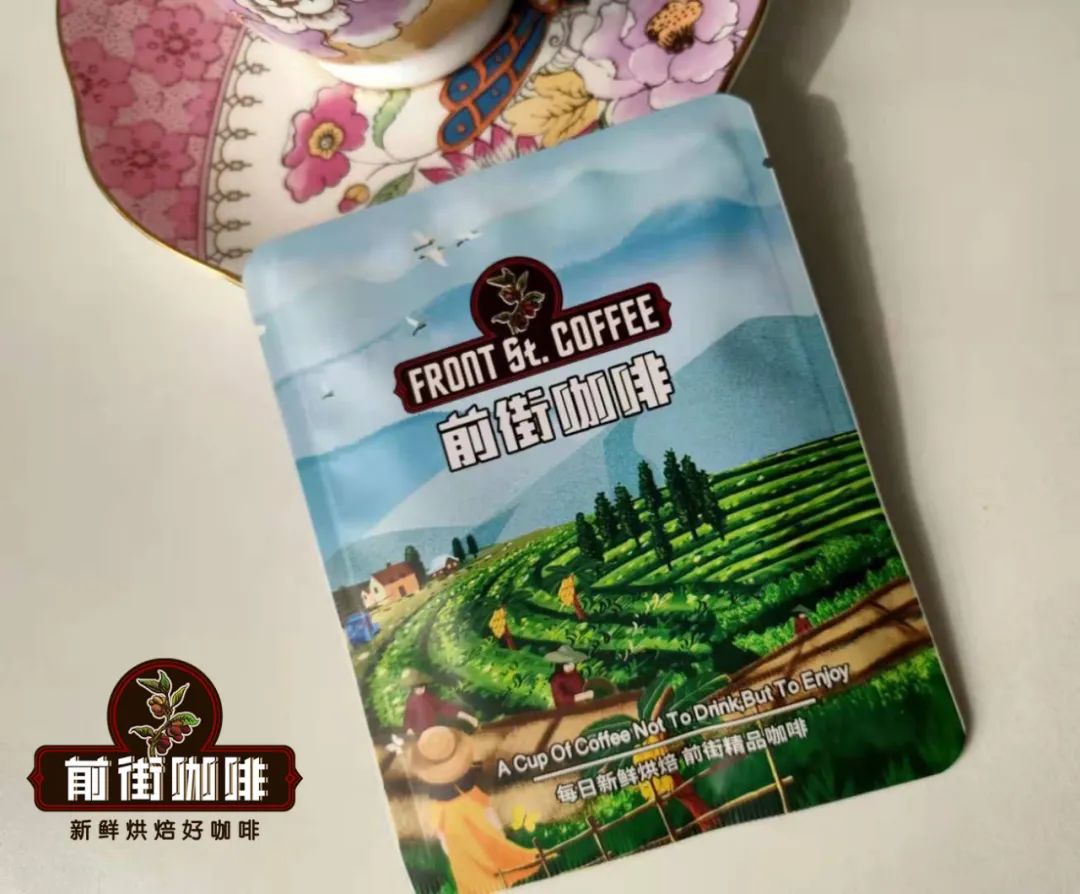
3. Use temperature measurement to measure water temperature
Qianjie Coffee said when introducing hand-brewed coffee that water temperature is one of the four variables in coffee extraction, and the level of water temperature will also directly affect the extraction.
Although the earbag does not have to be the same as hand flushing, then exactly how much water must be used, but if you want to taste better, Qianjie Coffee recommends a water temperature of 80-95 ℃.
The reason is that the water temperature is too high, it is easy to dissolve a large number of fiber parts of coffee powder, which will cause coffee to taste rustling and uncomfortable.
To avoid excessive water temperature, you can use electronic temperature measurement to measure the water temperature. if there is no thermometer, generally speaking, pour the boiling water into the small pot and wait for about 1 minute, the water temperature will fall below 95 ℃.
Of course, the temperature is not too low, otherwise the coffee may be tasteless after brewing.
Grasp the above three key points, rush out of the hang-ear coffee flavor upgrade a grade is not a problem!
[ear-hanging Brand recommendation]
The choice of coffee beans for hanging-ear coffee is actually very wide, mainly depending on personal taste preferences. Qianjie Coffee recommends the following representative coffee beans, sour, mellow and wine-scented.
1. Panamanian washed butterfly coffee beans
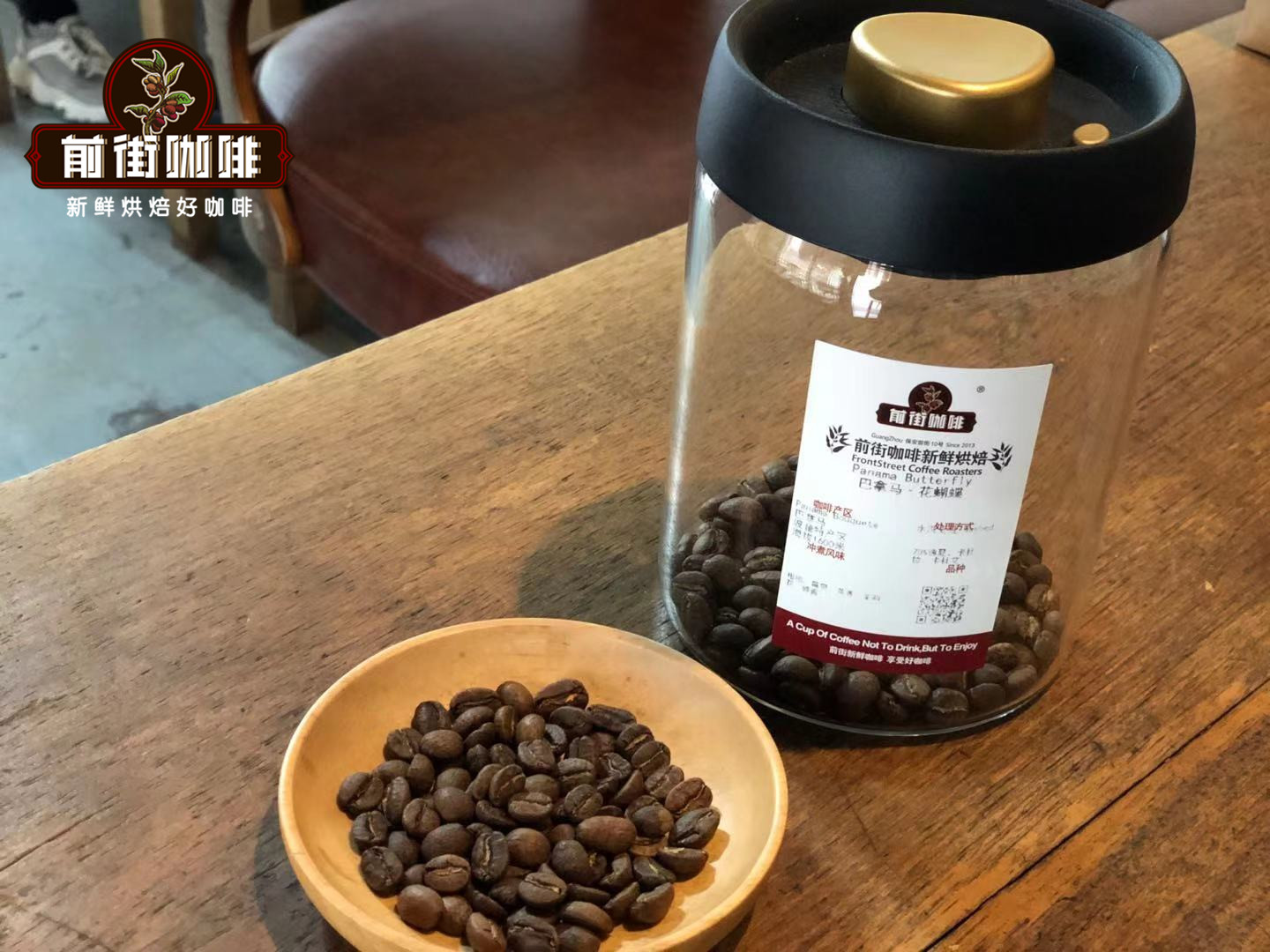
Panama is a Central American country bordered by Costa Rica to the west and Colombia to the east. Panamanian coffee is famous in the coffee world for its rosy summer coffee from the Emerald Manor. The whole of Panama is also filled with a strong smell of rose summer, many estates have planted rose summer coffee beans, but because the rose summer coffee is difficult to grow, small quantity, good flavor, the price is not low. But this flower butterfly has 70% rose summer high-quality pedigree, as well as Kaduai and Kaddura, planted in the Baru volcano region of Poquet and growing in the volcanic area at an altitude of 1600 meters. The special local microclimate leads to abundant rainfall in this area, and a large temperature difference between day and night, as well as meticulous harvesting and fine processing, so that this coffee performs well in terms of richness, acidity and floral fragrance.
What is even more surprising is that with this excellent quality and conditions, the price is very close to the people, so that people can experience the rosy summer flavor with high performance-to-price ratio.
The washing method uses a machine to remove the peel and pulp, leaving only the coffee beans wrapped in the endocarp. And at this time, there is a layer of mucous membrane on the outside of the beans, and the process of washing is to clean the mucous membrane. However, the adhesion of the mucous membrane is very strong and is not easy to remove, so it must be placed in the tank for about 18-36 hours to ferment and decompose the mucous membrane.
Flavor description: citrus, flower, tea, honey, high sweetness.
2. Kenyan coffee beans
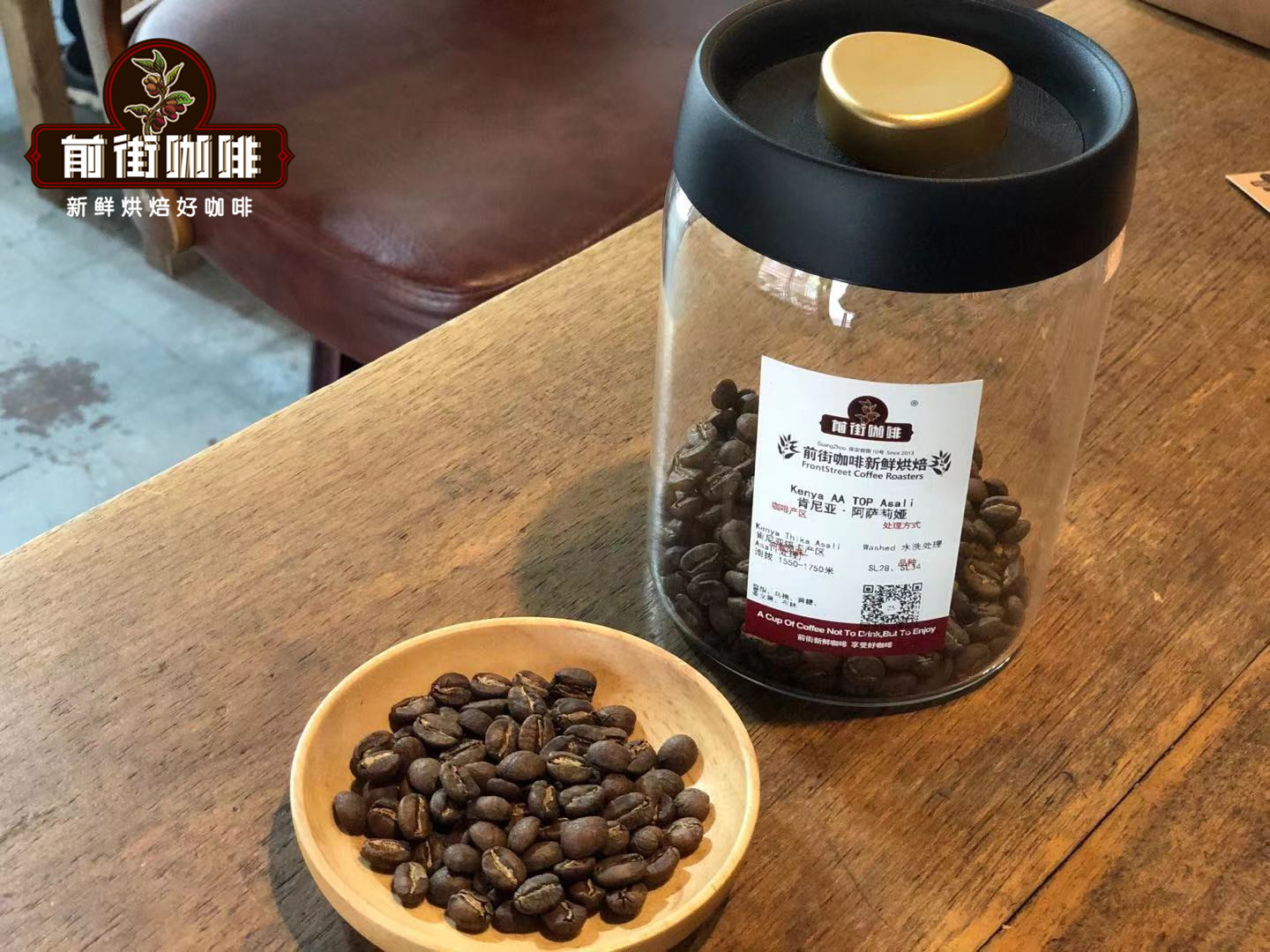
Kenya coffee is mostly grown at altitudes of 1500-2100 meters and harvested twice a year. Kenya coffee is grown by small farmers. Kenya coffee is grown near Mount Kenya in the middle of the country, and the beans grown are high-quality Arabica.
Kenya is graded according to bean size and cup test results. According to the size, shape and hardness of coffee beans, from high to low AA or AA+, AB, PB, C, E, TT, T. For AA and AB grade coffee beans, a special classification of cup test results (not officially recognized by Kenya, formulated by exporters) has been added, which is TOP, PLUS (+) and FAQ from high to low.
Kenya coffee's characteristic acidity has a lot to do with its excellent processing. The general washing method, screening high maturity coffee fruit, peel pulp, soaking tank fermentation to remove pectin, this process rarely exceeds 36 hours, but Kenya fermentation time as long as 72 hours. Then dry it until the moisture content reaches 12%.
Flavor Description: Cherry fruit with dark plum acid, mid-sweet, fruity berry finish and sweet yellow sugar, green tea aroma.
3. Ethiopian sun-dried red cherry coffee beans
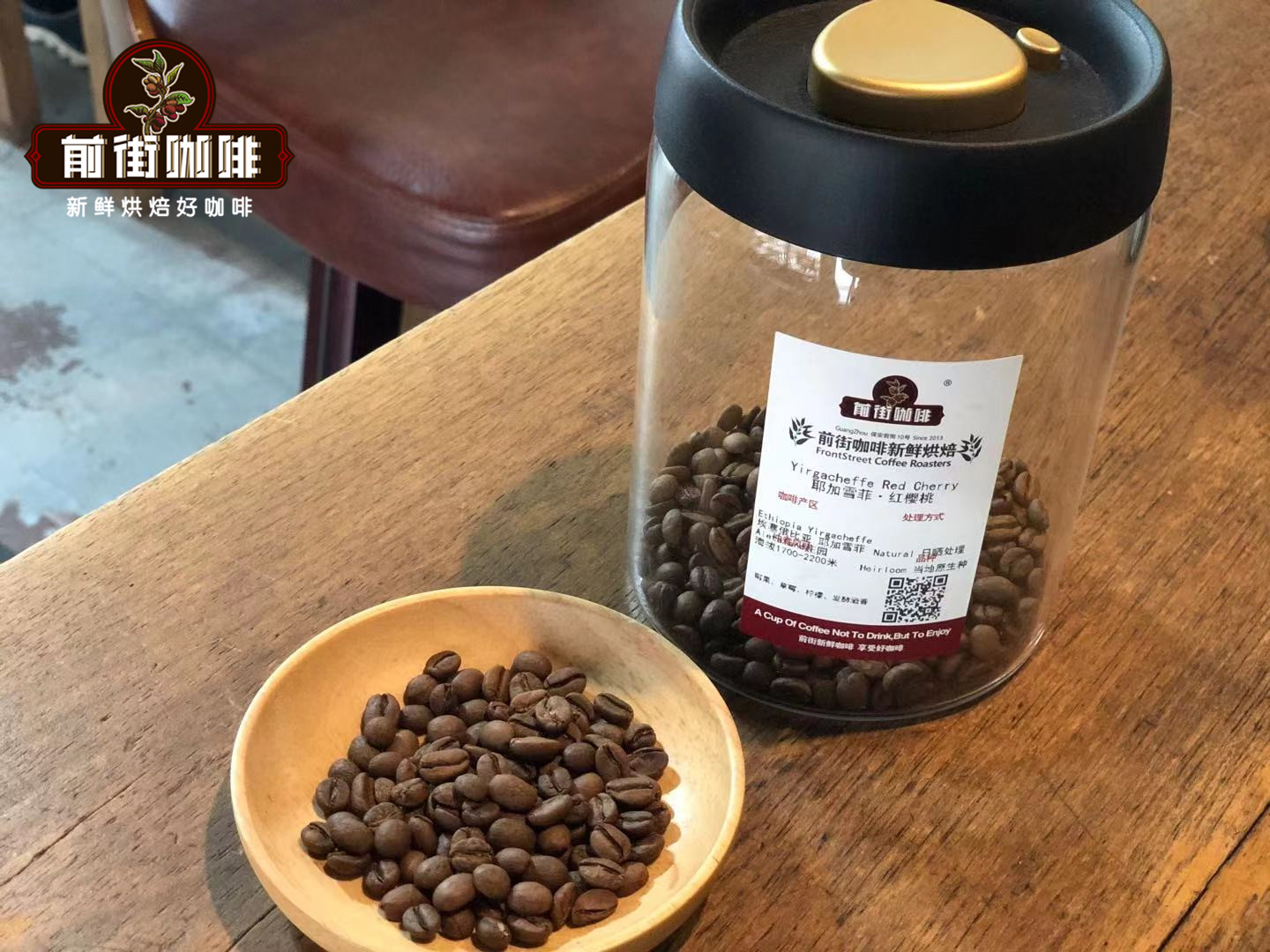
Red Cherry is actually a business plan to promote the quality of coffee, sponsored by Menno Simons, the founder of Trabocca, a Dutch raw bean company. Trabocca realized that the quality of Ethiopian coffee beans is mixed, there is little room for price improvement, and coffee farmers do not have a high income. In order to reverse this situation, we jointly launched the Red Cherry Program with local coffee farmers to solve the problem from the source. By raising the purchase price of high-quality raw coffee beans, coffee farmers were encouraged to complete every process of picking and processing coffee beans more attentively. In the picking stage, full manual picking is used to select coffee fruits with high maturity.
Sun treatment is the oldest and most primitive treatment of coffee beans. This red cherry in the sun will put the whole coffee cherry with intact pulp and peel in the elevated shed for sun treatment, cut off contact with the ground and prevent the soil smell caused by direct exposure. After more than two weeks of sun exposure, store the dark brown coffee fruit and wait for the whole flavor to be ripe. Before shipment, the processing plant will take out the coffee beans from the coffee cherries. After this kind of sun treatment, the bean has low acidity, obvious sweetness and alcohol thickness, but its cleanliness is not as high as that of washing treatment.
Flavor description: the sweet and sour taste is obvious, with the aromas of lemon, berries and fermented wine. The citric acid in the aftertaste is long-lasting and obvious. 4. Washed Yejia Xuefei coffee beans
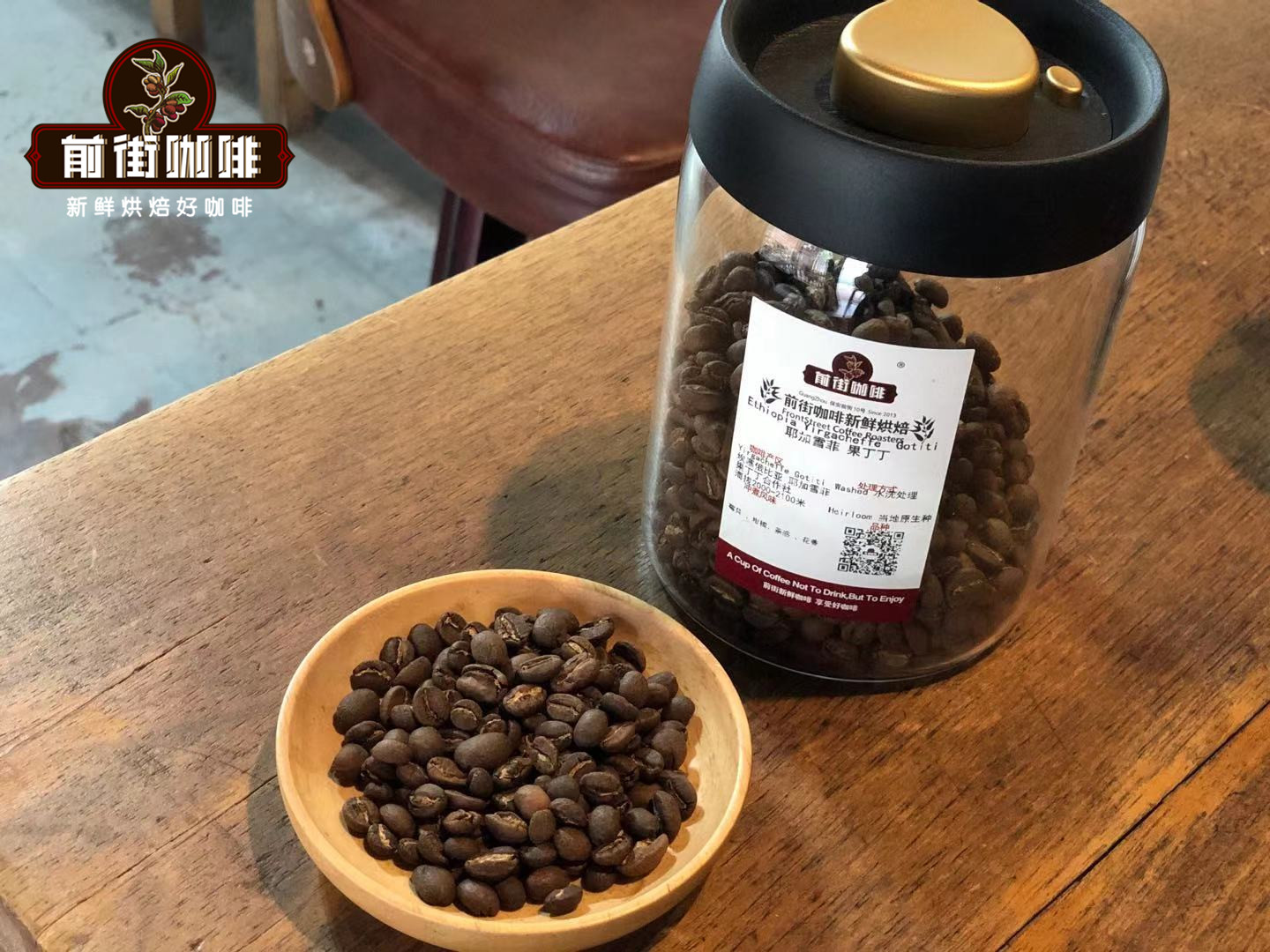
Yirgacheffe is located in Gedeo region of southern Ethiopia. Because the coffee flavor produced by Yirgacheffe has a unique style and is widely loved, it has its own product classification and occupies a place in the global boutique coffee market. Yirgacheffe itself is a small town, with three small producing areas Wenago, Kochere and Gelena Abaya adjacent to it. Because the flavor of the coffee produced is similar to that of Yejiaxuefei, these small producing areas are also divided into Yejasuefei producing areas.
At first, the coffee trees of Yejasuefei were planted by monks in Europe, and later the responsibility was transferred to farmers or cooperatives. Coffee trees are mostly planted in farmers' own backyard or mixed with other crops in the field, and the yield per household is not much, which is a typical rural coffee. Pastoral coffee is one of Ethiopia's four major planting systems, indicating that farmers plant coffee trees in their backyards or fields and mix them with other crops, with only 1000 to 1800 plants per hectare, accounting for 50 per cent of Ethiopia's total coffee production.
Traditionally, Yejia Xuefei used the oldest method of sun treatment, but because most of the early sun-dried coffee beans were dried on the flat ground, they were inevitably contaminated with miscellaneous smells such as soil flavor and dust, coupled with the lack of reasonable screening, the quality of sun-dried beans was average. In 1972, Ethiopia introduced Central and South American washing technology to improve the quality of coffee, which made the jasmine and citrus lemon aromas of Yega Xuefei clearer and brighter, making it one of the representatives of fine coffee in the world.
Flavor description: lemon, flower, sucrose, black tea.
5. Indonesia Mantenin coffee beans
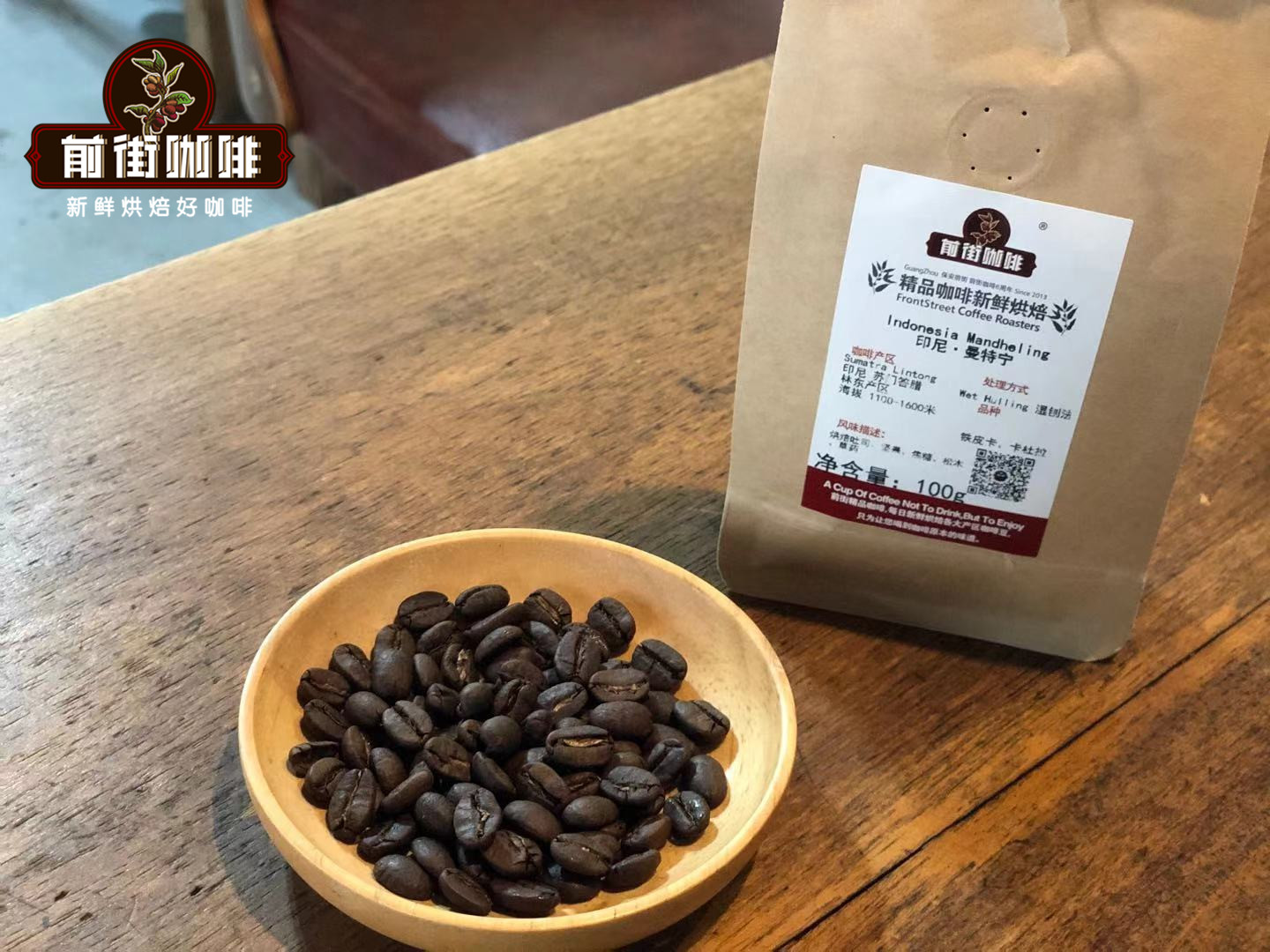
Indonesia first began to grow coffee under Dutch colonial rule, and then gradually developed a unique coffee flavor, the most famous being Mantenin coffee in Sumatra. Mantenin was originally a tribal name, but it was mistakenly spread under that name because the Japanese mistakenly thought it was a coffee name.
As the local weather is often dominated by Rain Water, with continuous typhoons, it is impossible to achieve the good weather needed for the sun, and the local economy is not good, so it is also impossible to use the more expensive way of washing. For various reasons, the wet planing method with local characteristics is derived (the wet planing method is to dry the parchment in the sun for 2-3 days with a water content of 20-24% to remove the parchment during the ordinary washing process.
Flavor description: herbal flavor, dark chocolate, caramel, sweet back. 6. Brazilian red bourbon coffee beans
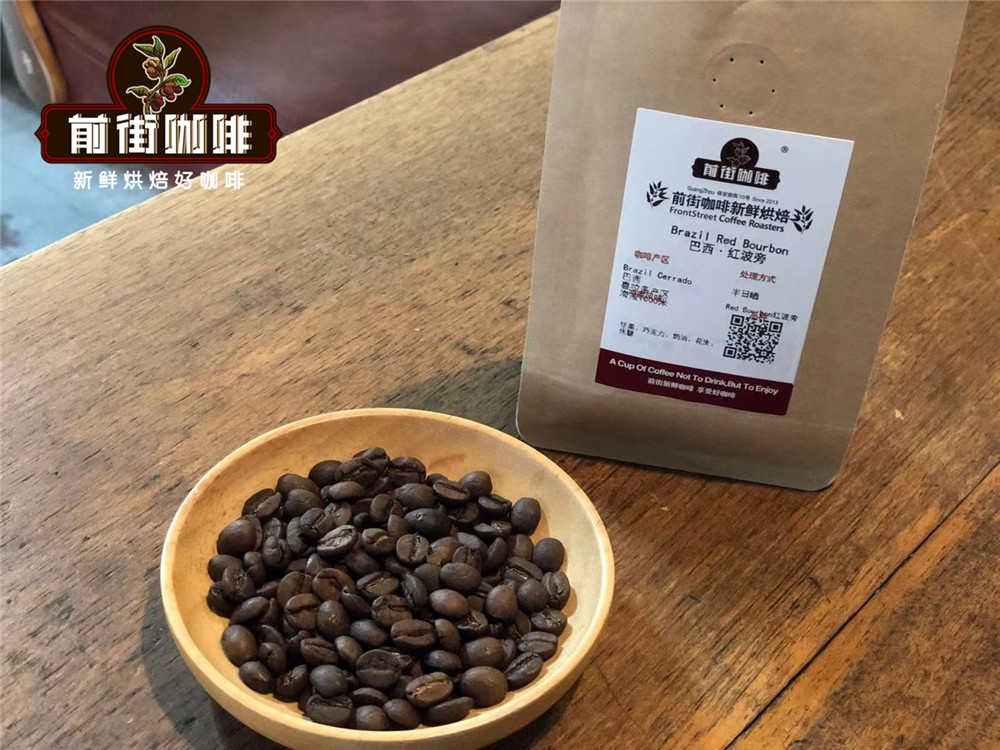
In terms of natural conditions, Brazil is in the tropics, with a tropical rain forest climate in the north, hot and humid all the year round, suitable for tropical crops, coffee trees are sunny crops, and sufficient sunlight is the condition for their growth. Brazilian half-sun (also known as pulp solarization) is common in some parts of Brazil. After removing the pulp, the coffee fruit is exposed to the shell beans covered with pectin for 1-3 days and dried to 12% moisture content by machine, which can be ripe like a storage container. The Brazilian half-sun method greatly shortens the time (the traditional sun takes 2-3 weeks), reduces the chance of coffee beans catching peculiar smell, and the quality is greatly improved. Flavor description: nut and chocolate have outstanding flavor and low acidity. 7. Yunnan small Coffee beans
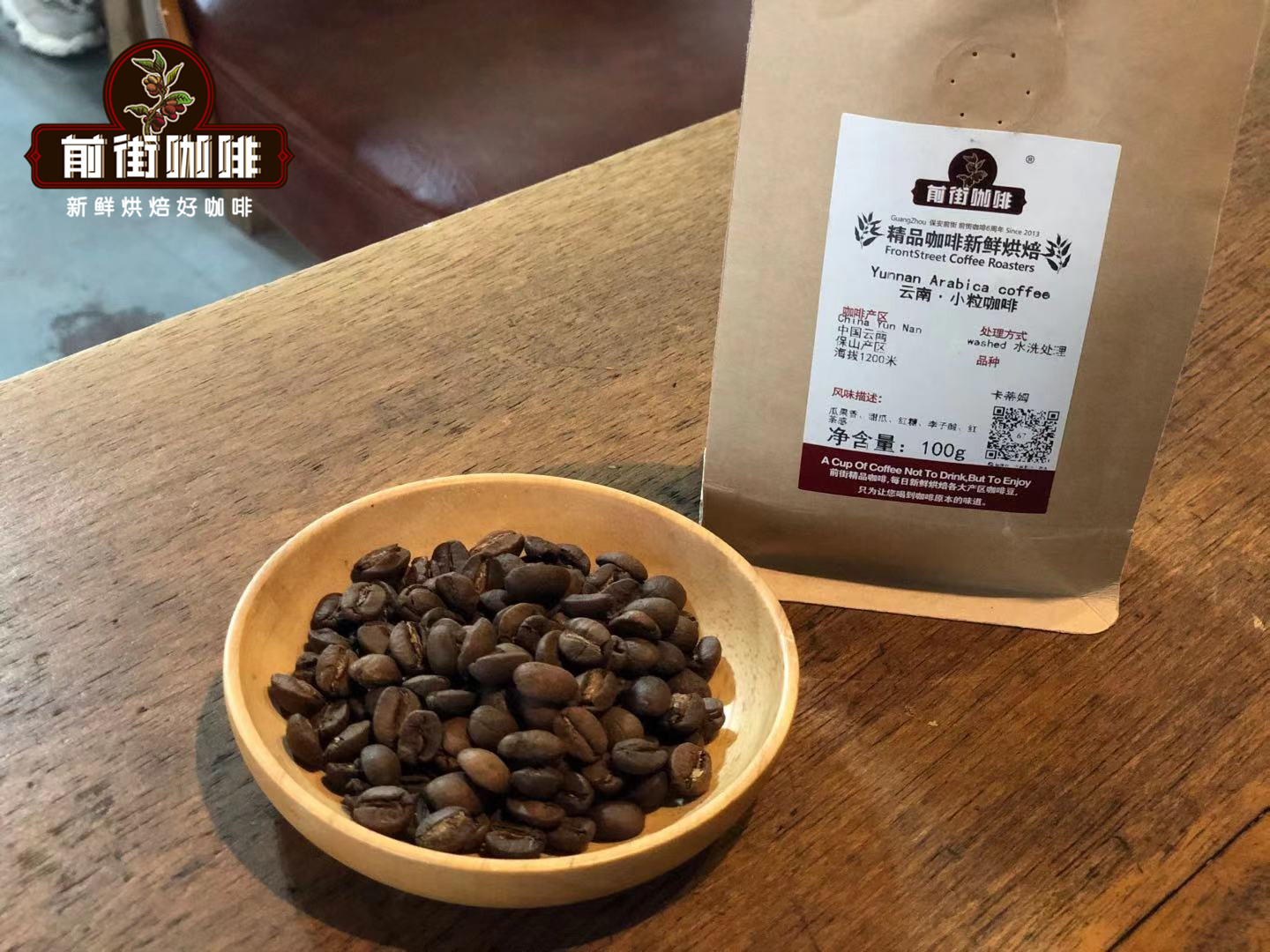
Qianjie Coffee came into contact with coffee cultivation at the beginning of its entry into the coffee industry. Qianjie Coffee also has its own coffee plantation. There are iron pickups and a small amount of bourbon in Yunnan. In Qianjie, you can see two kinds of Yunnan coffee beans, one Yunnan small grain, one is Yunnan Huaguo Mountain, Yunnan small grain is planted by Katim, while Yunnan Huaguoshan is an old variety of tin truck. Yunnan is now 99% of Katim varieties. Qianjie will call Yunnan Huaguo Mountain Yunnan boutique coffee, while Katim is Yunnan small grain. Flavor description: melons, nuts, cream.
8. Costa Rican Tarazu coffee beans
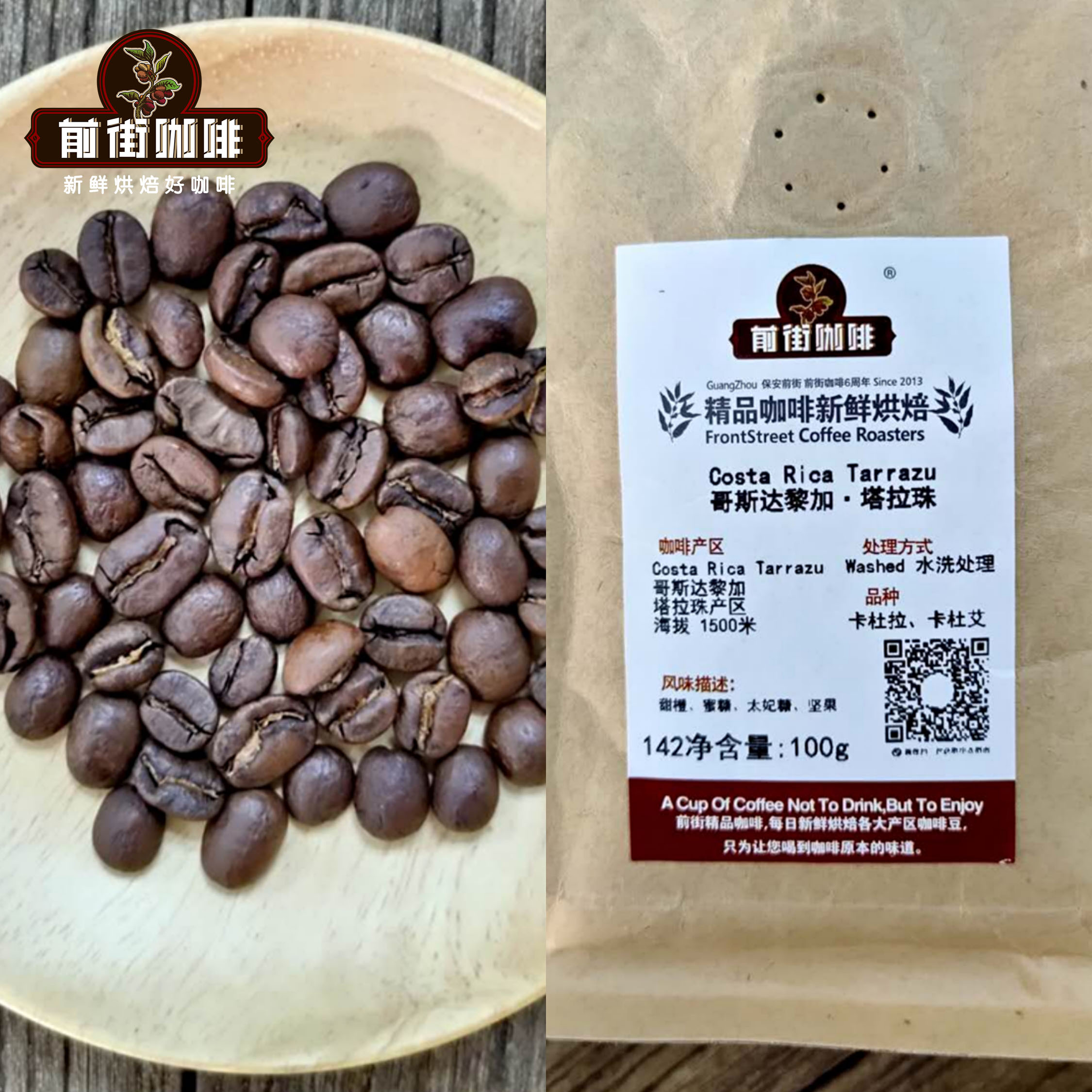
The Tara Zhu producing area of Costa Rica accounts for about 35% of the total output of Costa Rica. Tara Zhu producing area is the most important and high-quality boutique producing area in Costa Rica. In addition to micro-batches, Tarazhu also produces a large number of ultra-high-quality coffee. Tarazhu is located in the picturesque central valley of Costa Rica. There are two distinct seasons of drought and rain, perfect soil composition and topography, about 1200-1800m above sea level. All these factors make the region a well-deserved perfect planting area for Arabica species. The name "Tara Zhu" comes from the Guverta Indian people who once settled here. Flavor description: nuts, orange, honey. 9. Colombian Huilan coffee beans
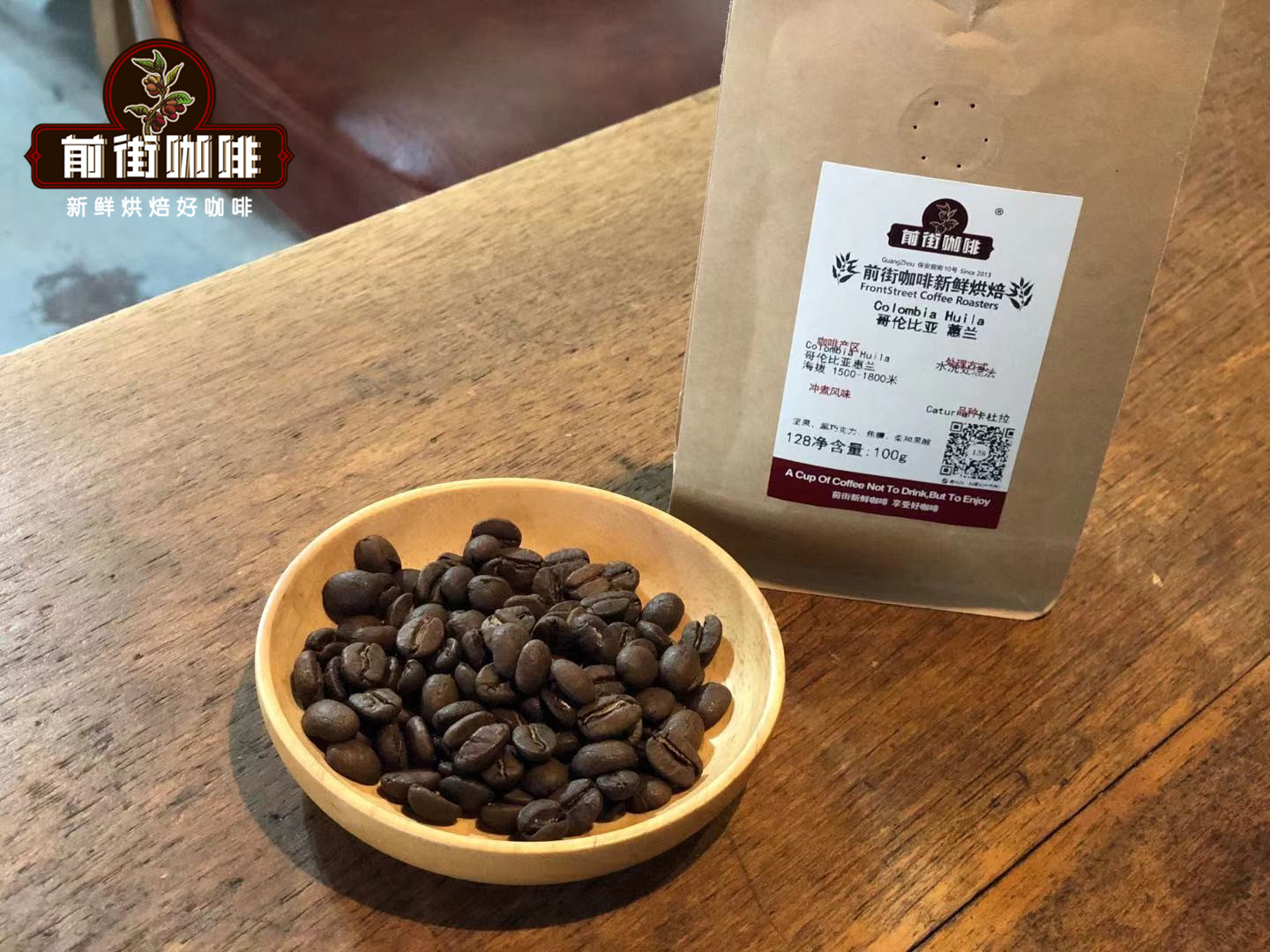
Colombian Huilan coffee beans are the top boutique in Colombia. Its balance is recognized as the best coffee, belonging to the Colombian State Corporation's selected alpine coffee beans, known as the Colombian national treasure. With its superior geographical and climatic conditions, Colombian coffee has always maintained high quality. Colombian coffee beans, which usually do not have a special market trademark, are from the National Coffee Farmers' Union of Colombia (national federation of colombia coffee growers), a very large alliance that spans Colombia. It has always been famous for its strict quality control and active promotion. Flavor description: nuts, dark chocolate, caramel, soft fruit acid.
10. Honduras Shirley Coffee beans
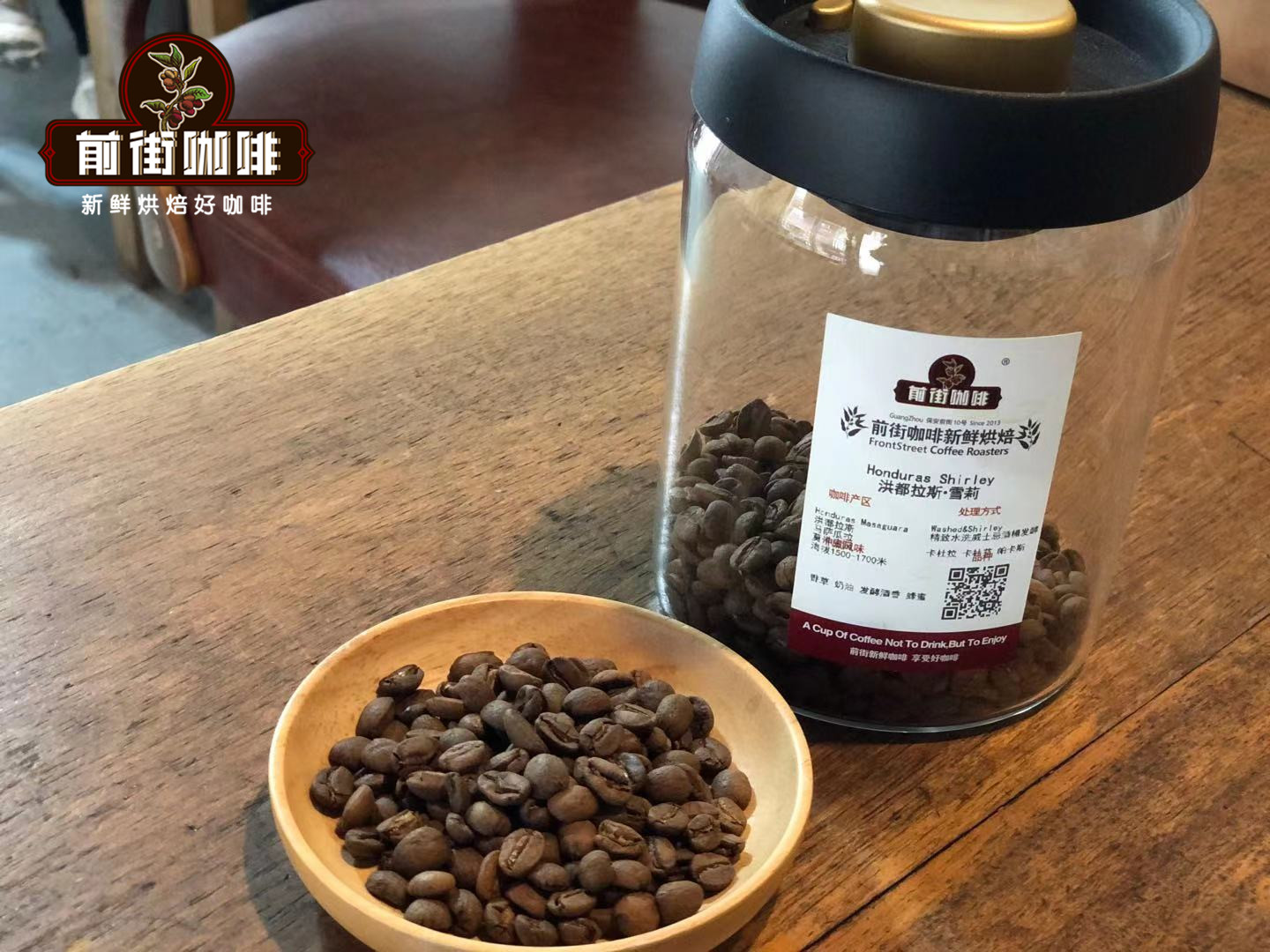
The geographical conditions of Honduras are no less than those of neighboring coffee-producing countries, such as Guatemala and Nicaragua. There are 280000 hectares of coffee plantations in Honduras, mainly small coffee plantations, most of which are less than 3.5ha. These coffee plantations account for 60 per cent of all coffee production in Honduras.
Shirley Coffee beans come from Masaguara, a city in Intibu á province in southwestern Honduras, where the wine-flavored coffee beans are produced.
The whisky barrel fermentation method is to first wash the freshly picked coffee fruit, then put it into the barrel for low temperature fermentation for 30-40 days (the temperature is about 15-20 ℃), make the raw beans absorb the flavor of the barrel, and finally dry in the shade.
Flavor description: obvious aroma of wine, vanilla, cream, balance, cocoa finish, moderate acidity.
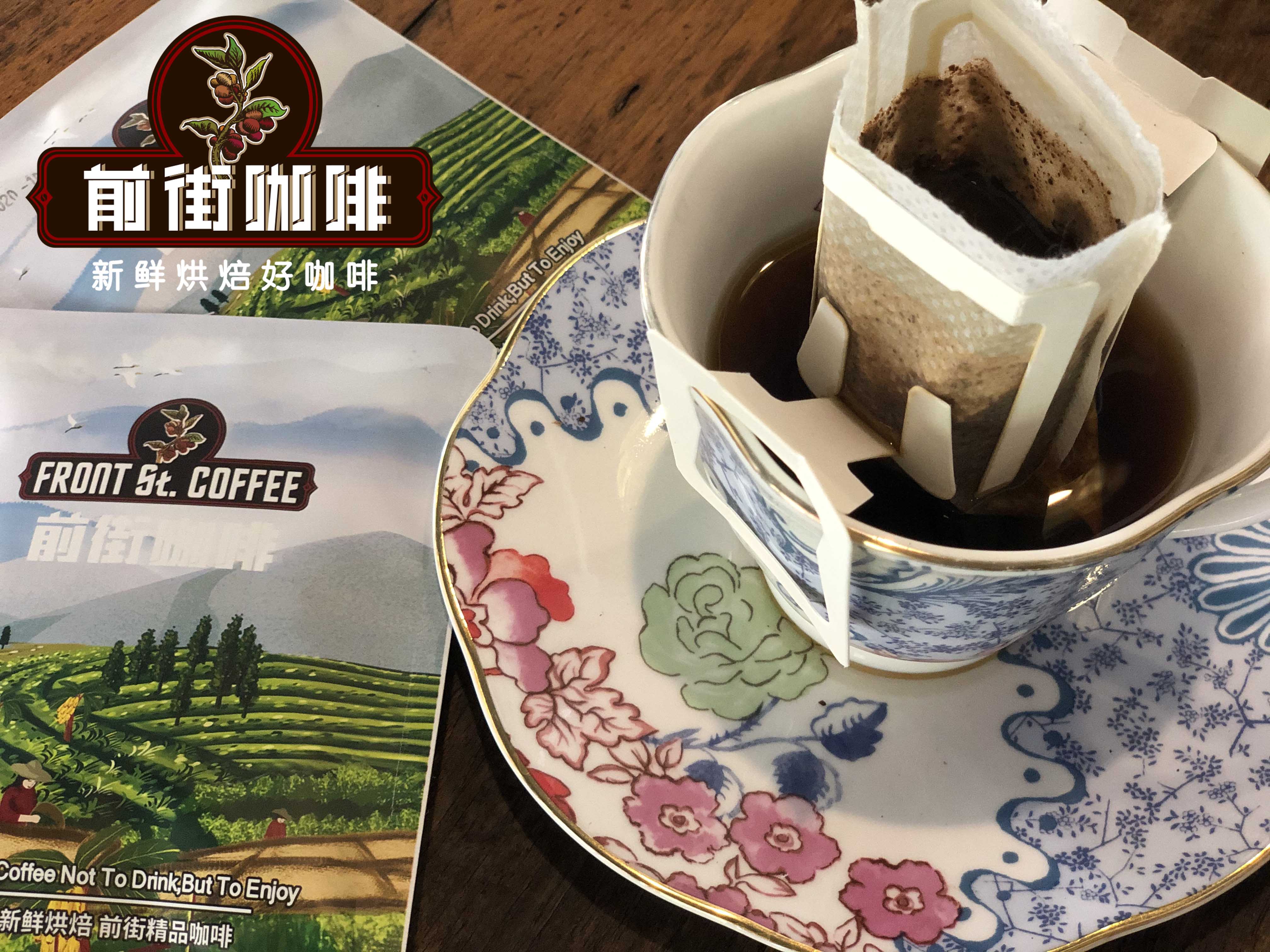
Professional coffee knowledge exchange more coffee bean information please follow the coffee workshop (Wechat official account cafe_style)
For more boutique coffee beans, please add private Qianjie coffee on Wechat. WeChat account: kaixinguoguo0925
Important Notice :
前街咖啡 FrontStreet Coffee has moved to new addredd:
FrontStreet Coffee Address: 315,Donghua East Road,GuangZhou
Tel:020 38364473
- Prev
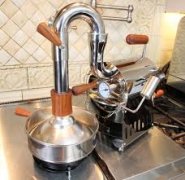
Taiwan Huky500 coffee roaster introduces the skills of using Huky500
This idea has gone beyond the idea of every serious coffee nerd: can I bake my own coffee? We debated for enough time, and when we first stumbled upon a picture of the Huky 500, we were obsessed with it. The device looks like something between a firestick and a spaceship-a tool for a new world of coffee knowledge and experience. When we found out that the baker
- Next
The barista personally assessed how the Nespresso coffee capsule tastes.
NESPRESSO, an Italian coffee capsule, is a branch of the well-known Nestle capsule. The ESPRESSO extracted from the 19BAR high-pressure extraction of the capsule coffee machine, the coffee flavor is quite rich, refreshing and refreshing, friends who like espresso coffee can consider; although there are more than a dozen limited flavors, it seems that new flavors are coming out one after another, and we can still look forward to it.
Related
- What is the Philharmonic pressure? How to use Philharmonic pressure to make delicious coffee
- Why does a hand grinder have more fine powder than an electric grinder?
- In addition to the hot mom, what is the difference between the versions of EK43 | ditting and Mahdi ek43?
- What kind of equipment do you need to make coffee by hand? Introduction to novice starter cooking equipment tools
- Espresso needs to be ground how thick and thin scale entry Italian Coffee Machine Bean Grinder investigation and Grinding course
- How much does it cost to open a small private cafe? How much does it cost to learn coffee? How to operate it?
- The difference between the flavor characteristics of hand-brewed coffee and coffee maker is hand-brewed coffee really better than coffee maker? Can I use a coffee machine to make coffee beans by hand?
- The difference between 01 and 02 of hario v60 filter cup what is the difference between 01 and 02 filter cup opening and cooking flavor
- What's the difference between the smart cup and the French kettle? Which is better, the French kettle or the Smart Cup?
- What's the difference between a smart cup and a V60 filter cup? The difference between the taste of smart cup and hand-brewed coffee

